A Wheely Good Guide to Corvette Alloys
Just as the Corvette has gone through numerous design changes over the past six decades, so too have Corvette Wheels.
K. Scott Teeters wrote an extensive article about the design history of Corvette wheels on SuperChevy.com. The first aspect of wheel design he explains is how unsprung weight is a factor in suspension performance.
“Unsprung weight includes tires, wheels, and suspension members. Everything that rides on the chassis structure is sprung weight. Less unsprung weight means that the suspension can be better controlled. As steel Rally Wheels and steel-belted tires got larger and heavier beginning in 1969, optional aluminum wheels were a must,” Teeters states in the article.
He continues, “For those wanting less unsprung weight, RPO YJ8 Cast Aluminum Wheels ($175) were on the 1973 option sheet. But just like the C2 cast-aluminum knock-off wheels, early eight-slot aluminum wheels had the same problems as before: porosity and air leakage. The problems weren’t solved until 1976. By 1978, steel-belted 255/60R15 tires on steel Rally Wheels were the heaviest of all of the wheel/tire combos on C3s. Except for the 1994-’95 ZR-1, the 1996 Grand Sport, and the Collector Edition; C4s used fan-blade alloy wheels that pulled air from behind each wheel to help keep the brakes cool.”
There are three methods for making aluminum-alloy wheels — forging, rolled forging and suction casting. Teeters explains the difference, “Forging molds and shapes a solid piece of aluminum-alloy using force and compression. Rolled forging takes hot aluminum-alloy and uses rollers to force the metal into the thickness and shape needed. Both forging methods are used to make performance wheels. Suction casting pulls in the molten alloy to better fill the molds. This method gives designers freedom to create intricate designs. This is why the number of wheel options has grown since 2009.”
Corvette wheels come in may different styles and finishes, as well as price ranges.
“2000 Corvettes came with beautiful five-spoke wheels that could be ordered polished for $895. Five-spoke Magnesium wheels were available from 1998-’04 with prices ranging from $3,000 in 1998-’99; then $2,000 in 2000-’01; $1,500 in 2002-’03; and finally $995 in 2004. Forged aluminum wheels were available in 2008 and 2010. Since 2005, Corvette wheels have been available polished; chromed; and painted silver, gray or black,” the article states.
Corvette enthusiasts agree that wheels can really change the personality of a car. There is such a huge selection of Corvette wheels to choose from with so many different options, including style, finish, color, stripes and trim. Each Corvette owner can really make a personal statement by what combination of these features they select. With the introduction of the high-tech C8 Corvette, it will interesting to see what new wheel designs will be available.
To help navigate the myriad of Corvette wheel options, the SuperChevy.com article provides a brief description, including sizing and cost, for 22 different wheels from 1997-2019. Here is that information:
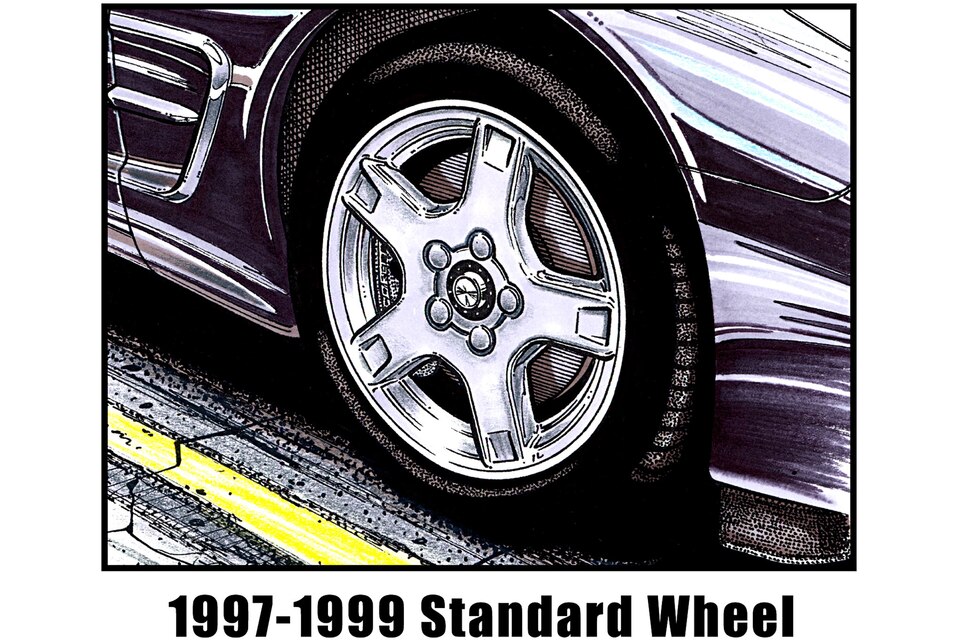
From 1997-’99, Corvette coupe, convertible and hardtop models used the same silver-painted alloy wheels measuring 17×8.5 front and 18×9.5 rear. There are chrome aftermarket versions. Many in the Corvette community thought the design was just OK and opted for newer C5 or aftermarket wheels.
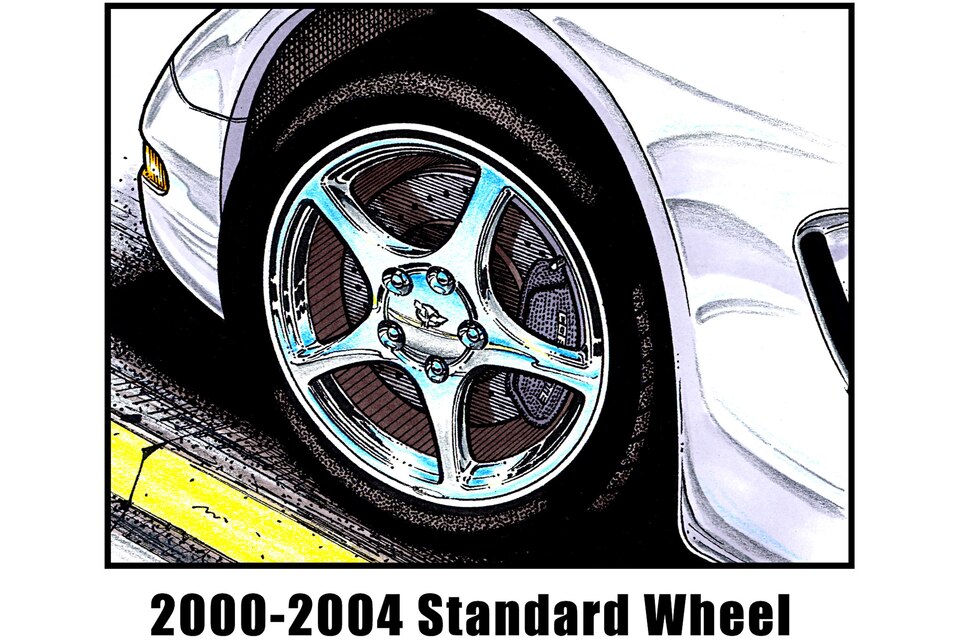
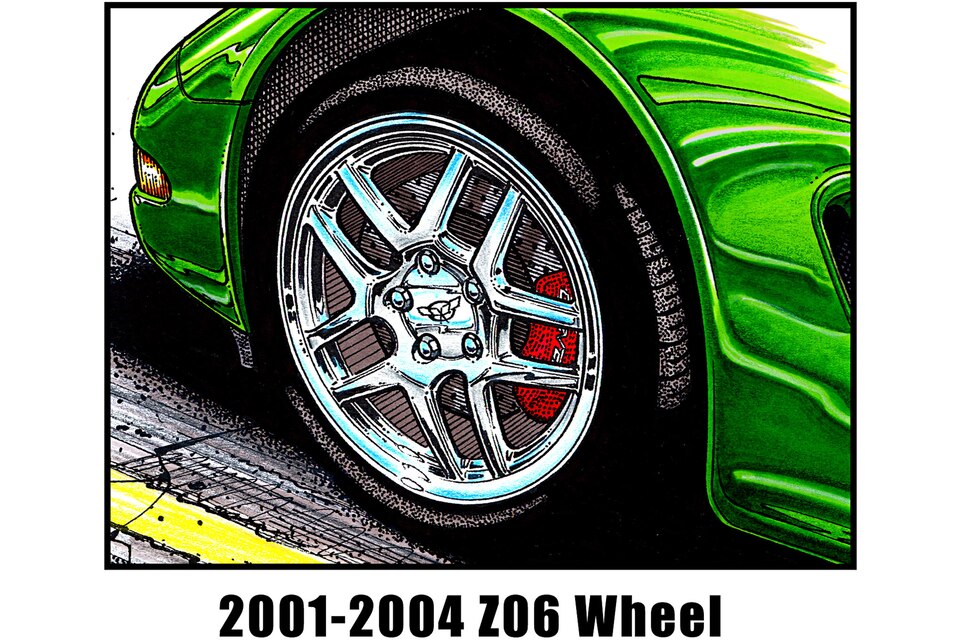
The bargain-priced Z06 was a total Corvette game-changer. Aside from the improved suspension, the 385-405 horsepower and stiffer structure, the Z06’s wheels are 1-inch wider front and back. The front wheels are 17×9.5 and the rear wheels are 18×10.5. The tires measured 265/40ZR17 on the front and 295/35ZR18 on the rear. Z06 customers appreciated the extra grip.
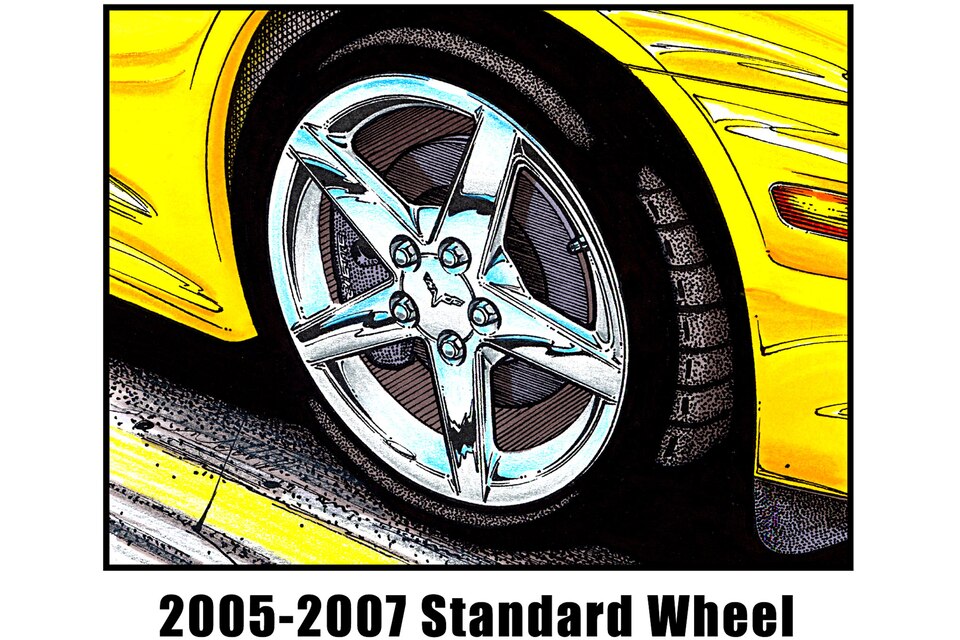
From 2005-’07, Corvettes came with these handsome five-spoke wheels. The front wheels were 18×8.5, the same width but 1-inch larger in diameter as the standard C5 wheels, and shod with 245/40ZR18 tires. The rear wheels were 19×10, 1-inch larger in diameter and 0.5-inch wider than the C5 wheels, and shod with 285/30ZR19 tires. Optional were the polished ($1,295) and the Competition Gray painted ($295) versions.
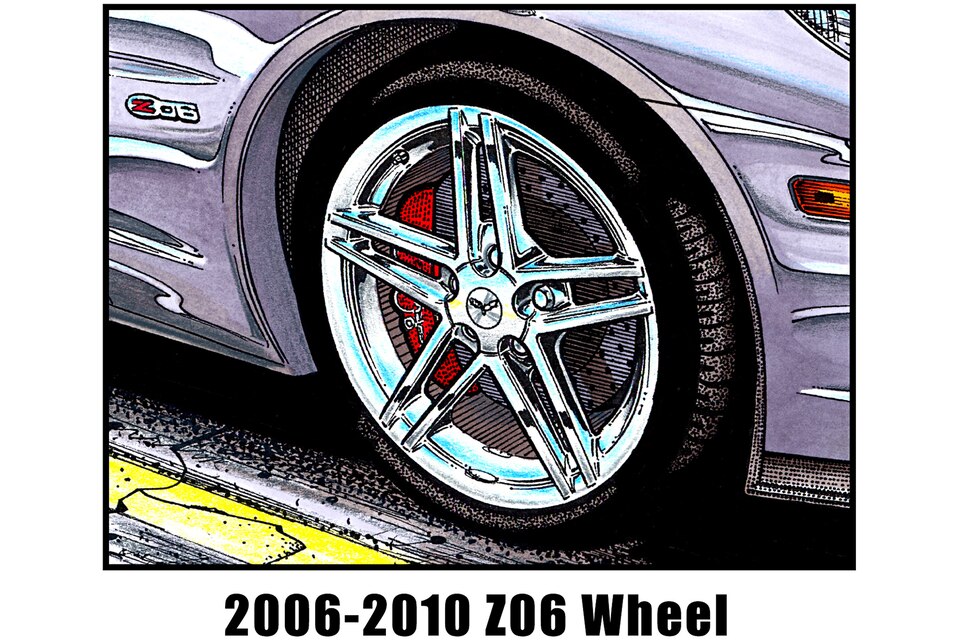
As awesome as the C5 Z06 was, the C6 version was more. In addition to the extra 100 horsepower (505 hp) and the widebody, the Z06’s wheels and tires were impressive. The front wheels were 1-inch wider, 18×9.5, and shod with 275/40ZR18 tires. The rear wheels were 2 inches wider, 19×12, and shod with 325/30ZR19 tires.
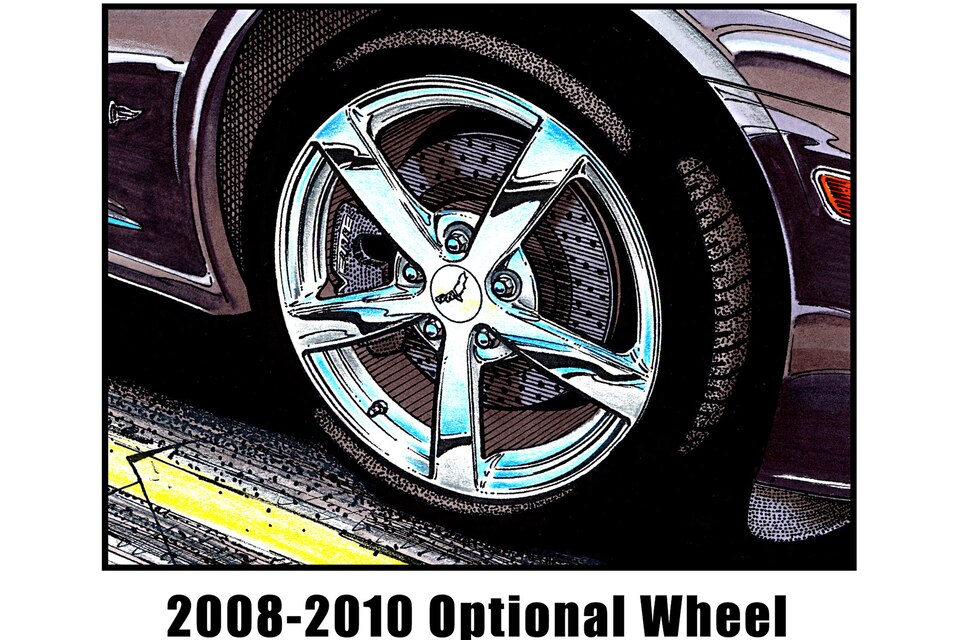
Optional wheels started to populate the Corvette catalog. The forged five-spoke wheel was available polished ($1,295) or chromed ($1,850). Wheel and tire sizes were the same as the standard Corvettes. Approximately 23 percent of all ’08 Corvettes had these optional wheels.
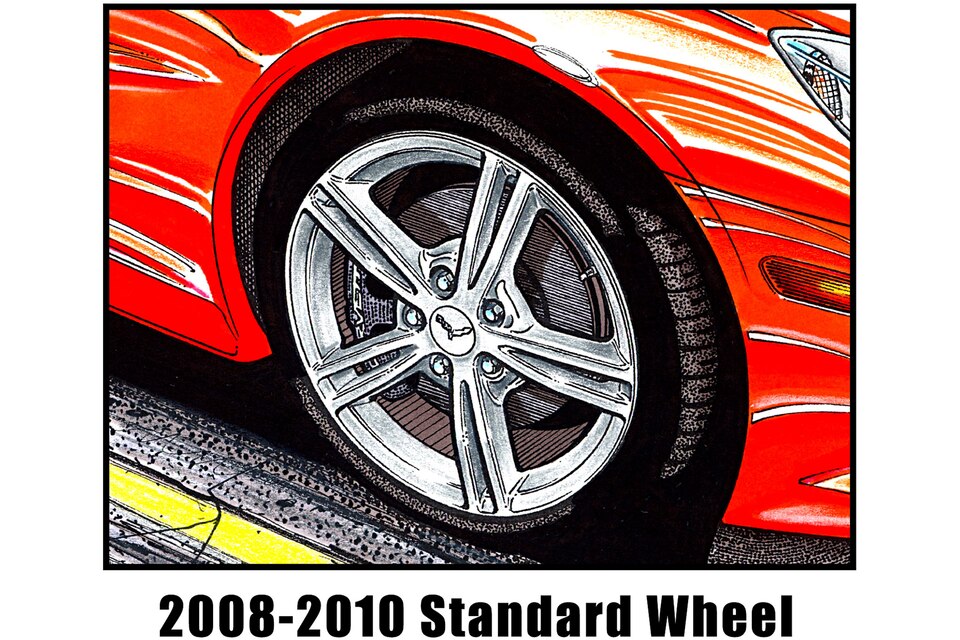
Base model 2008-’10 Corvettes came with this split-spoke design, available in painted Sparkle Silver or optional Competition Gray ($395). Only 1,781 Competition Gray optional wheels were ordered. Sizes were the same as standard Corvette wheels.
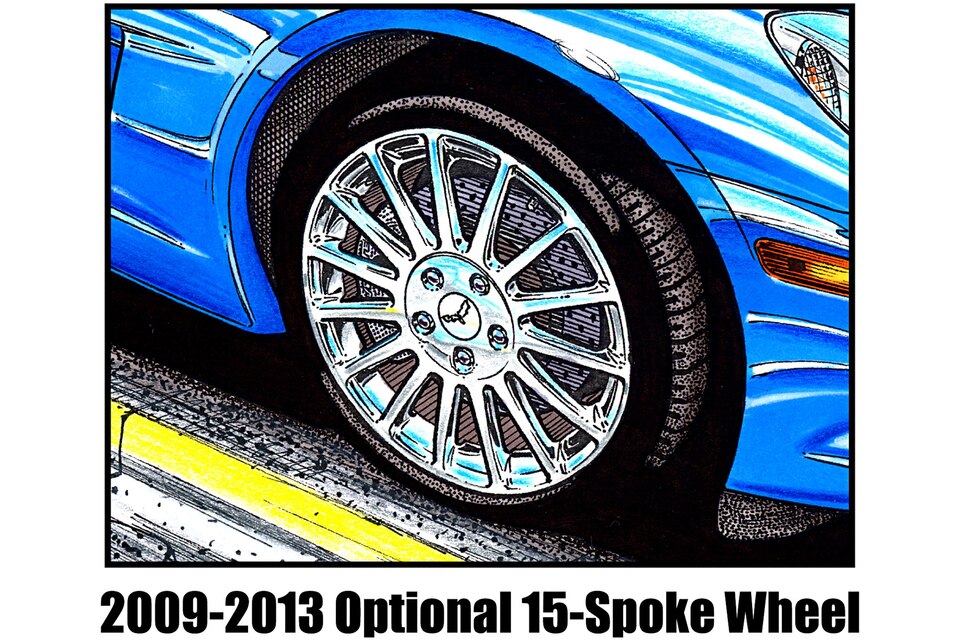
These 15-spoke Polished Aluminum wheels could be found in the 2008 Corvette accessories brochure. The design was inspired by the wheels used on the successful Corvette Racing team’s C6.R race cars. The sizes were the same as the standard 2008-’13 wheel, and were not available on the Z06. New, the front wheels cost $625 each and the rear wheels cost $715 each, for a total of $2,680.
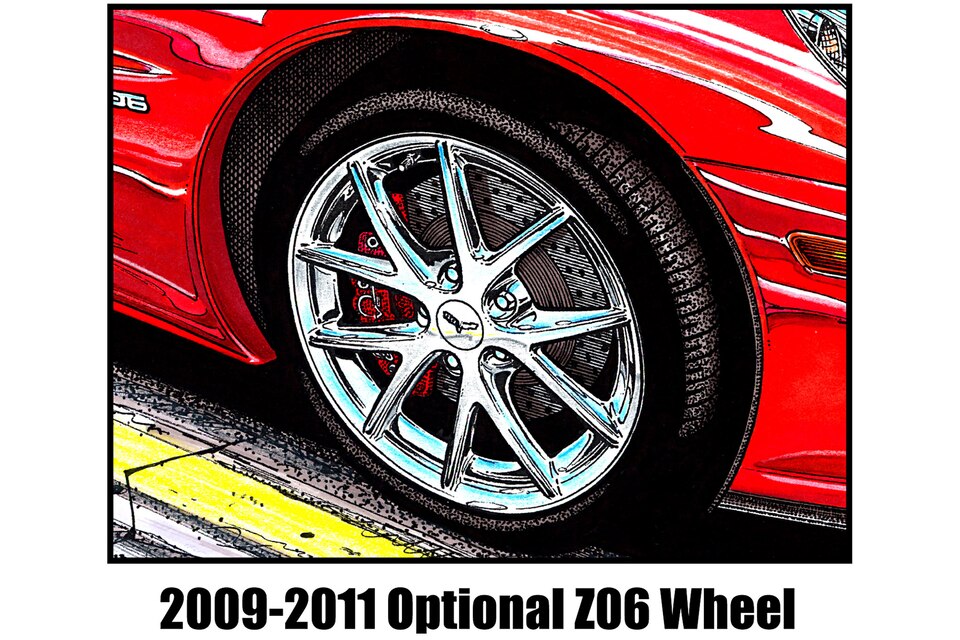
The optional 2009-’11 10-spoke chrome Spider wheel showed up as part of the Crystal Red 2008 427 Limited Edition Z06. The following year the wheels were available chromed ($1,995) or painted Competition Gray ($395). Front and rear sizes were the same as the standard Z06.
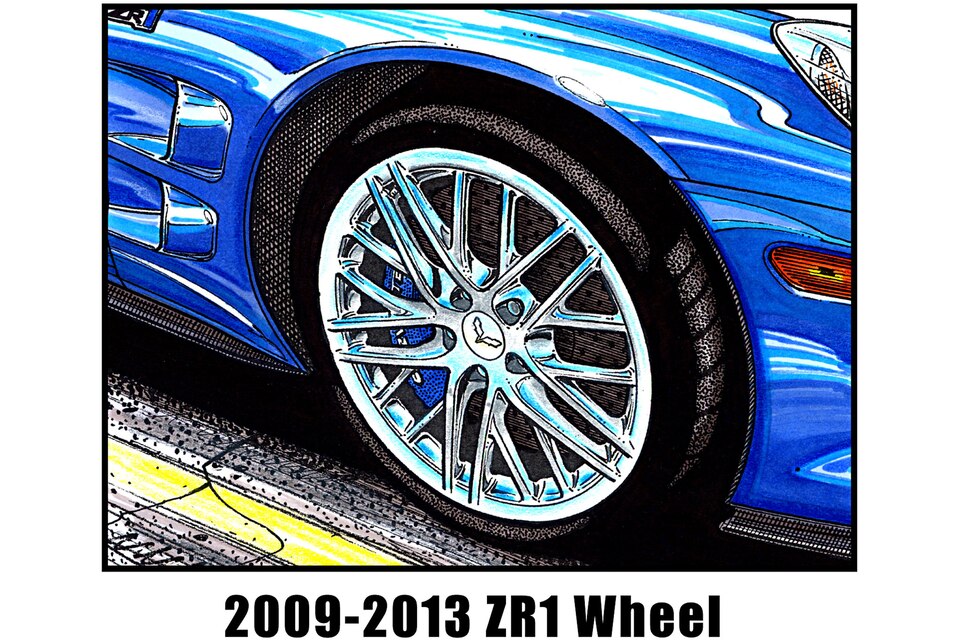
The supercharged ZR1 was more than a Z06 with an extra 133 horsepower delivered by its supercharged, 638-horsepower LS9. The ground effects, suspension, brakes, wheels and tires were designed to complement one another into an outstanding Grand Touring (GT) Corvette. The wheels were 19×10 on the front shod with 285/30ZR19 Michelin Pilot Sport PS2 ZP tires and on the rear were 20×12 wheels shod with 335/25ZR20 PS2s. Standard ZR1 wheels were painted Sterling Silver. The chrome versions cost $2,000.
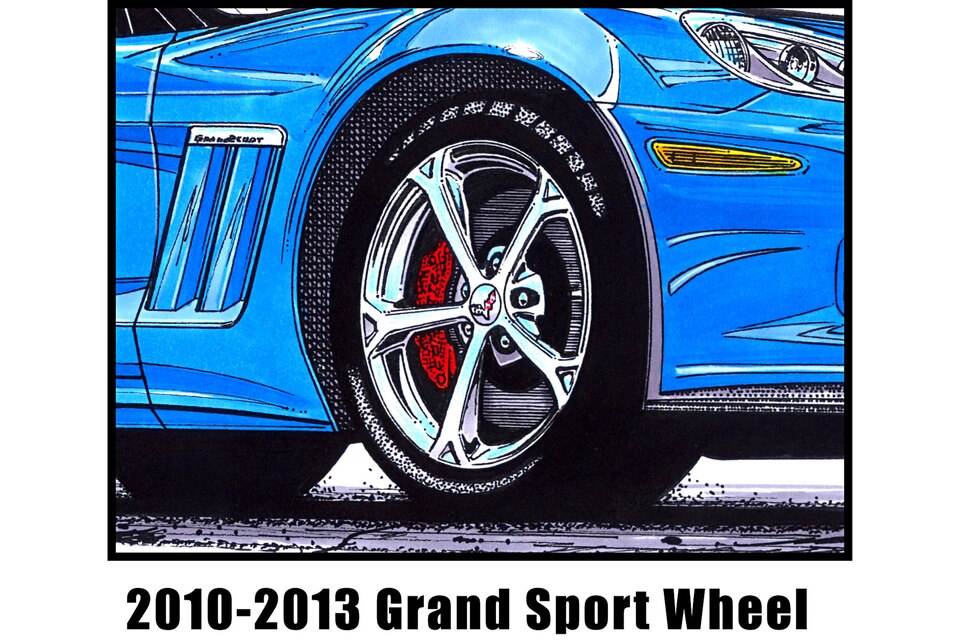
The Grand Sport coupes and convertibles were the best-selling Corvettes from 2010-’13. The wheel design was unique, but the size of the wheels and tires were the same as the Z06. Three finishes were available: standard silver painted, optional gray painted ($395) and chrome finished ($1,995).
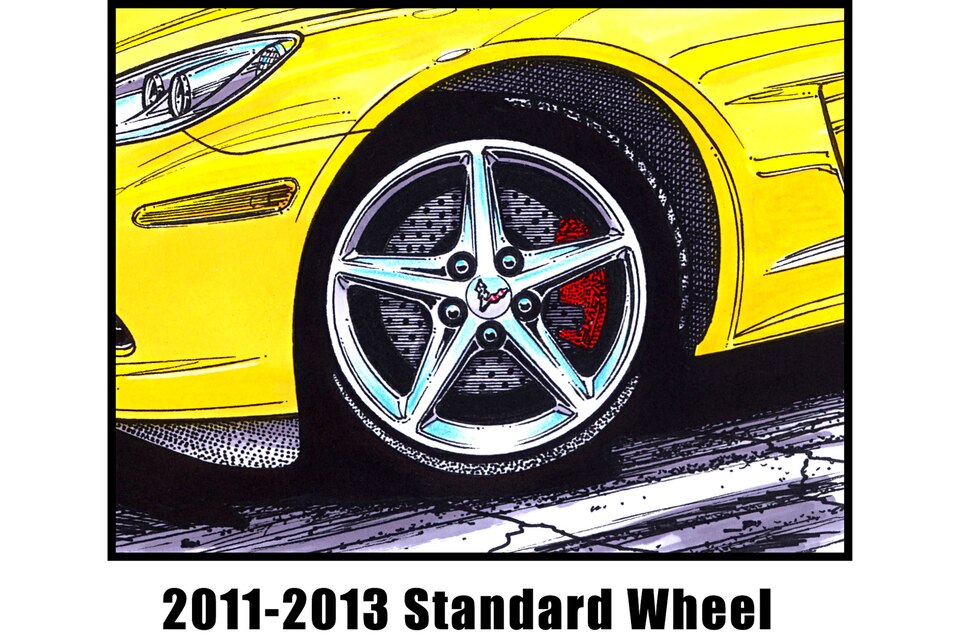
Once again, base model Corvettes got new wheels. The slim, five-spoke design was the same size as previous base model Corvettes and was available as standard silver painted, painted Competition Gray ($395), Machine Faced ($895) and Chrome Aluminum ($1,850). You don’t see many of these wheels because Grand Sports accounted for the lion’s share of Corvette sales from 2010-’13.
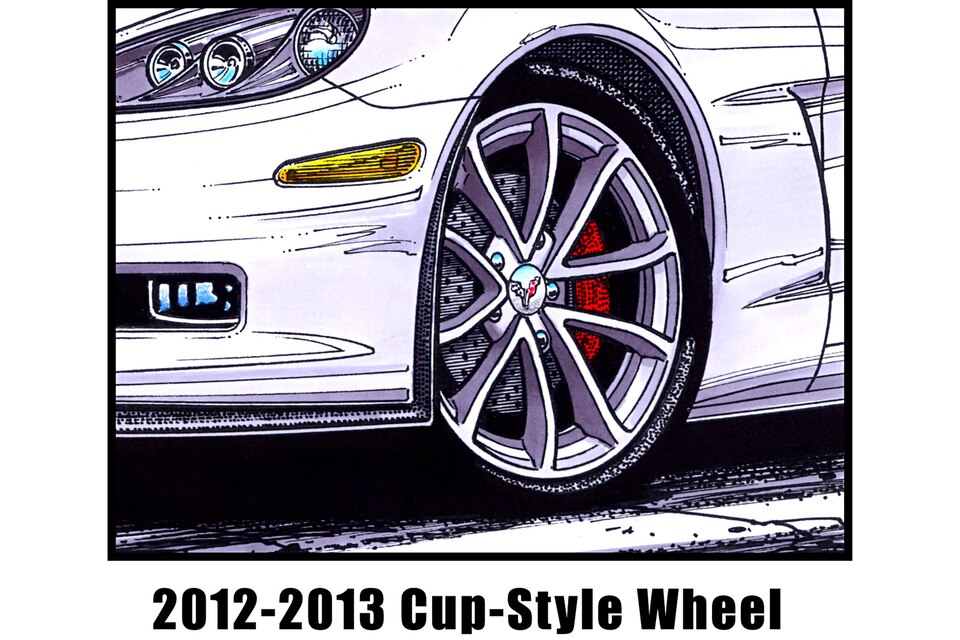
For 2012-’13, 10-spoke Cup wheels were added to the Z07 package and were part of the 2012 Z06 and ZR1 Centennial Package, painted black with a thin red stripe on the wheel bead. Optional was the Machine Face Cup Wheel for the Z06 and ZR1 ($995) in 2012 and 2013.
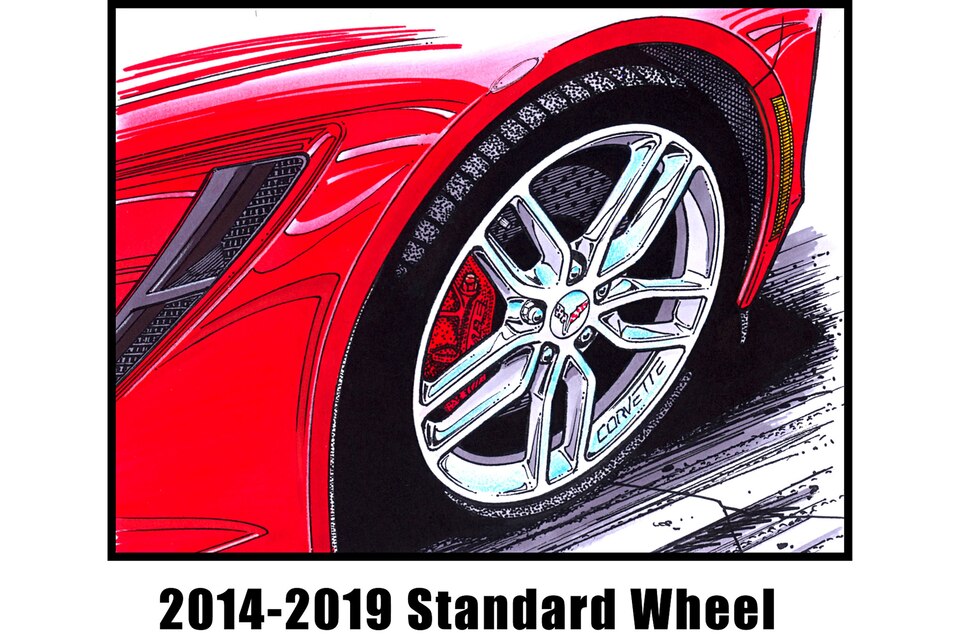
The Z51 split five-spoke wheels were 1-inch larger in diameter front and rear: 19×8.5 front and 20×10 on the rear. The Michelin Pilot Super Sport run-flat tires were the same width as the stock Corvette, but had a slightly shorter aspect ratio: 245/35R19 front and 285/30R20 rear. The standard Z51 wheels were painted silver and there were two optional versions: black painted ($495) and chrome ($1,995).
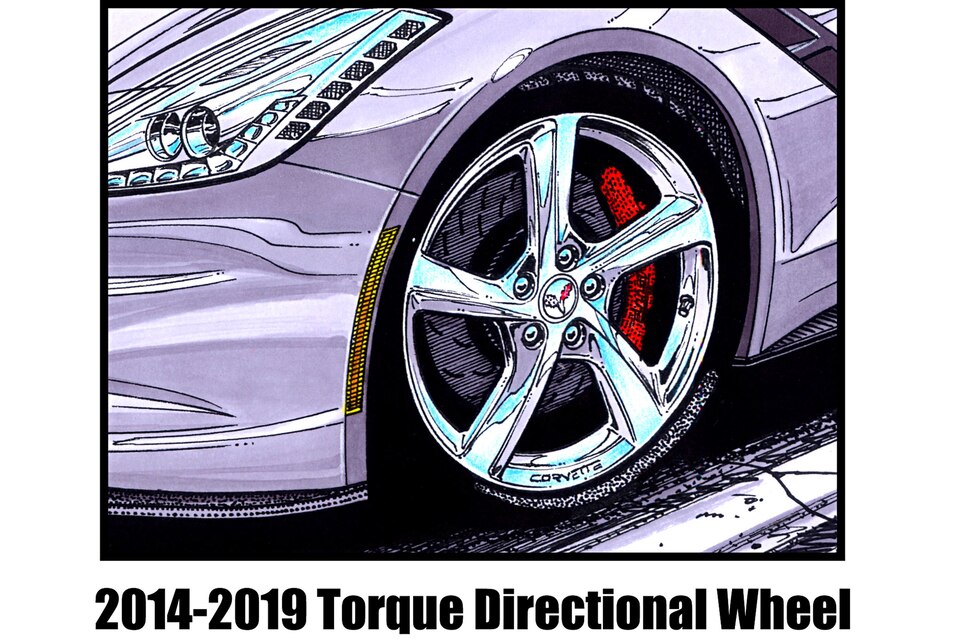
The Torque Directional accessory wheels were the same size as the standard wheel and available painted silver and chrome. The painted silver versions cost $710 each for the front and $760 for the rear, for a total of $2,940. The chrome versions cost $885 each for the front and $935 each for the rear for a total of $3,640.
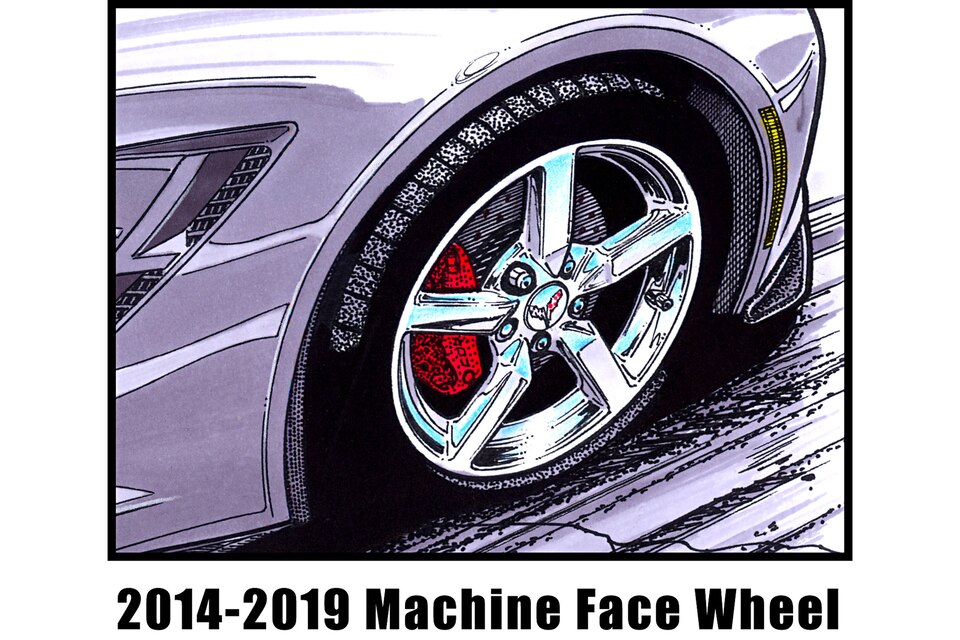
The standard 18×8.5 front and 19×10 rear C7 wheel was painted silver. Optional versions included the Machine Faced ($1,495) and chrome ($1,995).
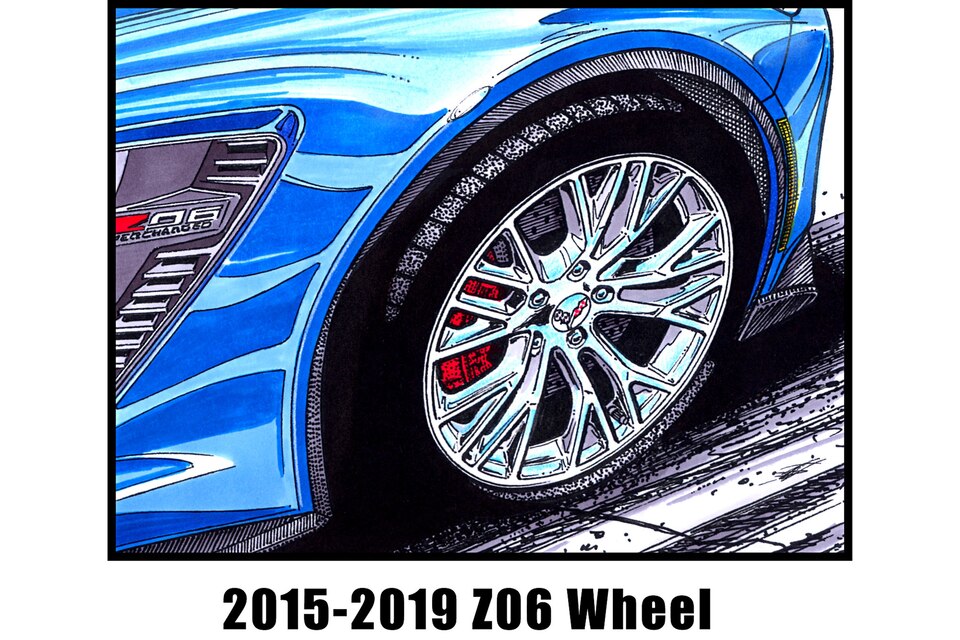
The Z06 tradition of “more of everything” was established. The basic Z06 rides on 19×10 front wheels and 20×12 rear wheels and are shod with Michelin Pilot Super Sport ZP Summer Only tires measuring 285/35ZR19 on the front and 335/25ZR20 on the rear. Wheel finishes included the standard painted Pearl Nickel and optional painted black ($495), painted Spectra Gray ($595) and chrome ($1,995).
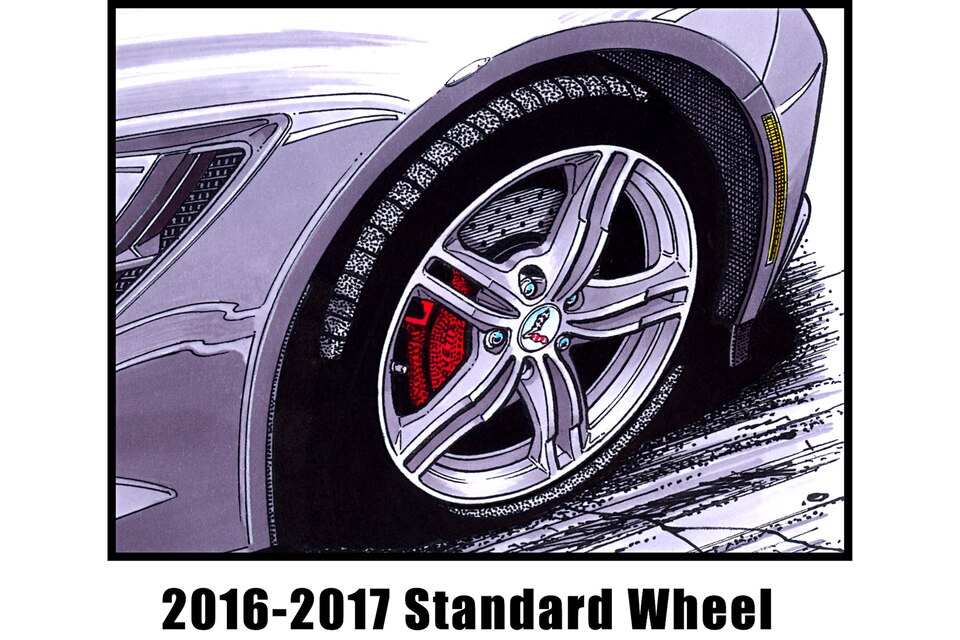
The 2016-’17 base model Corvettes got the new 10-spoke wheel available in four different finishes. The wheel sizes were the same as previous standard C7 wheels: 18×8.5 on the front and 19×10 on the rear. Standard was the painted silver version and optional versions were painted black ($495), Black Machine ($1,495) and chrome ($1,995).
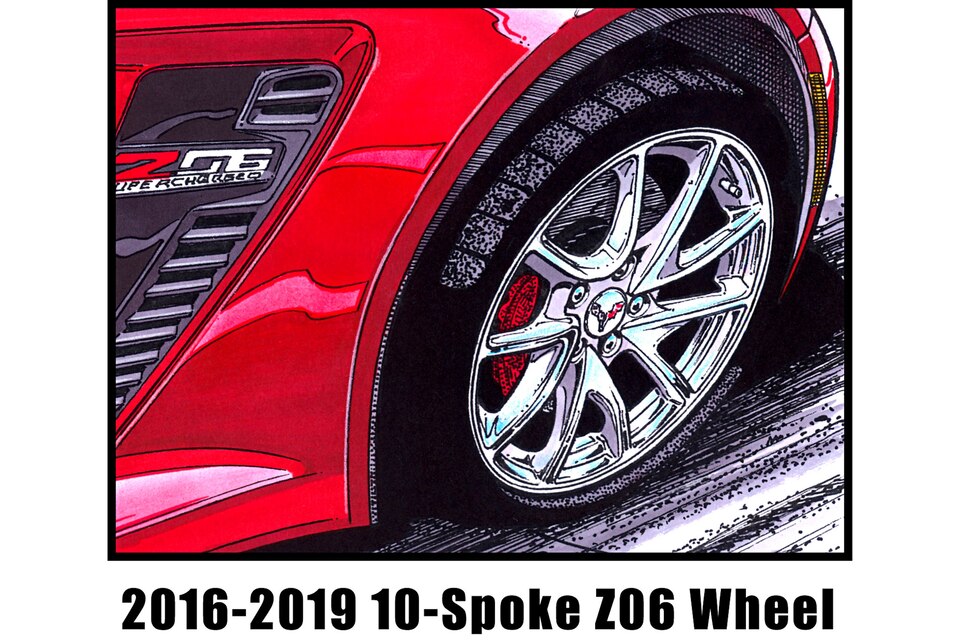
From 2016-’19, Z06 customers could order the Z06 Blade Wheel with Machined Groove in Pearl Nickel or black paint. These were accessory wheels and cost $710 each for the fronts and $760 each for the rears, for a total of $2,940.

You don’t see many Genuine Corvette Accessory wheels on C7 Corvettes because they are very expensive and make the factory optional wheels look like a bargain. The Motorsports wheel was available polished and painted black. A full set of 19-inch front and 20-inch rear polished Motorsport wheels went for $3,300 and the painted black set went for $2,980.
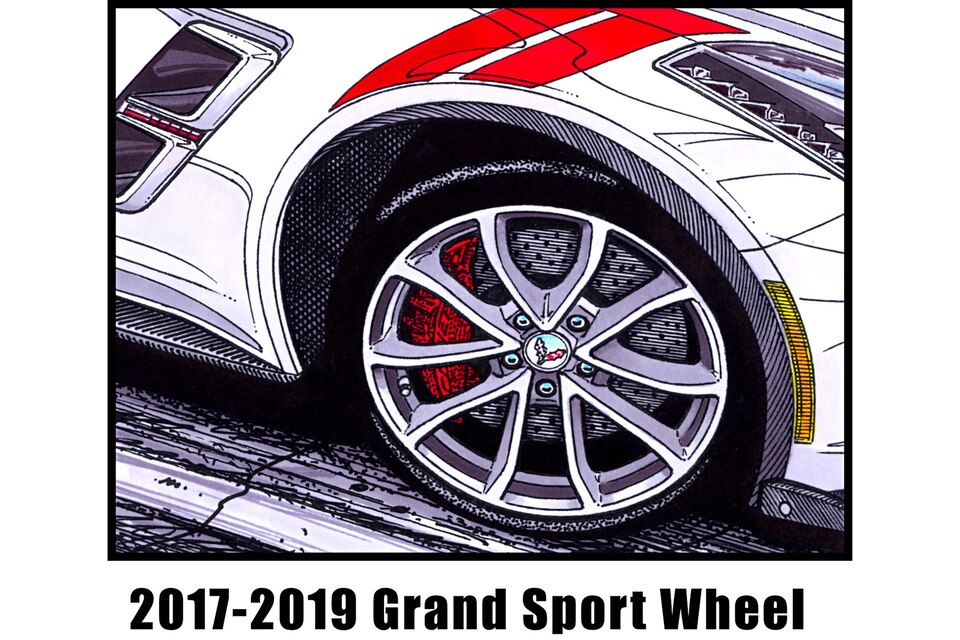
These should look familiar. The C6 Cup-style wheels were part of the standard C7 Grand Sport package. This wheel was available in five finishes: standard painted Pearl Nickel, painted black ($495), painted black with a red stripe on the wheel bead ($1,495), Machine Faced ($1,495), and Chrome ($1,995). The wheel and tire combo is the same size as the Z06: 19×10 front and 20×12 rear wheels shod with Michelin Pilot Super Sport ZP Summer Only 285/35ZR19 and 335/25ZR20 tires, respectively.
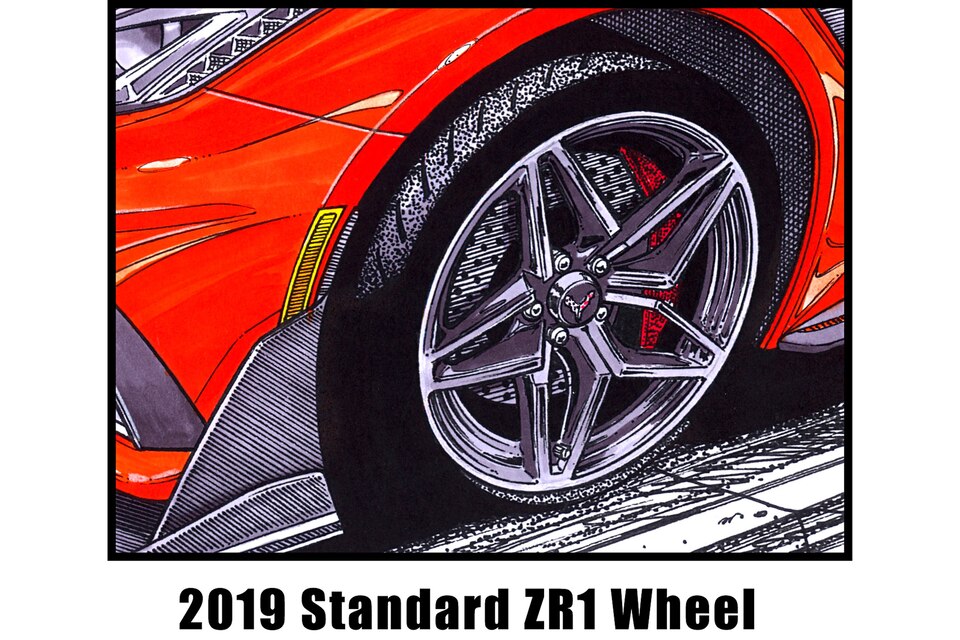
For the mighty ZR1, Corvette engineers determined that the 20×12 Z06/Grand Sport-size rear wheels were sufficient, but the front needed 19×10.5 wheels, 0.5-inches wider than the Z06/Grand Sport wheels. The standard ZR1 wheels were painted Pearl Nickel. The painted Carbon Flash wheels cost $495. The painted Satin Graphite wheels cost $595 and the Chrome wheels cost $1,995.
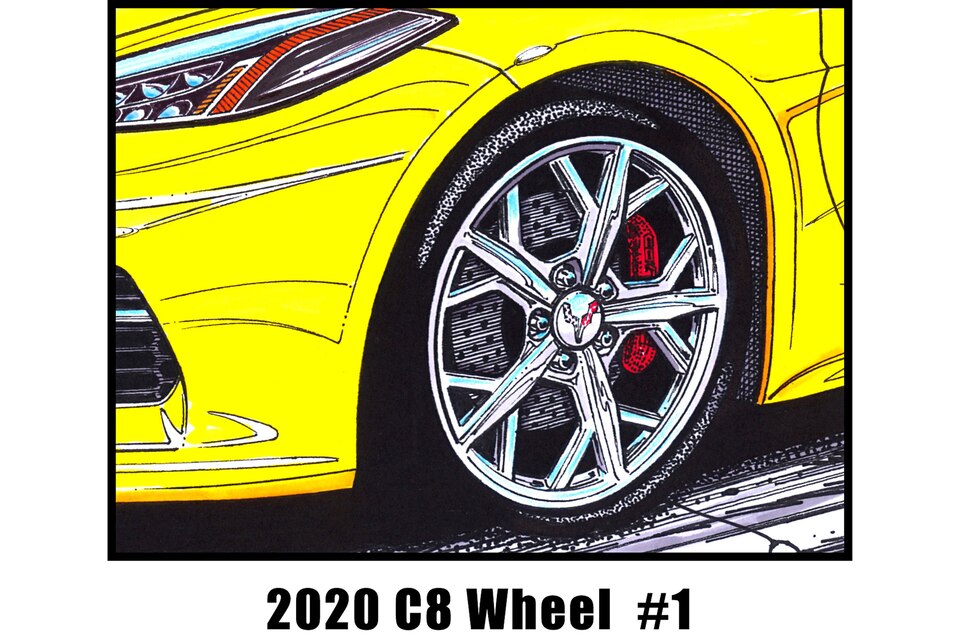
In addition to the previous wheel descriptions, Teeter speculates in his article about what future C8 wheels may look like. His article was published before the C8 made its debut and that speculation was based on spy photos of the C8 Corvette that were widely circulated at the time. He says it appears there would be two unique wheels designs offered.
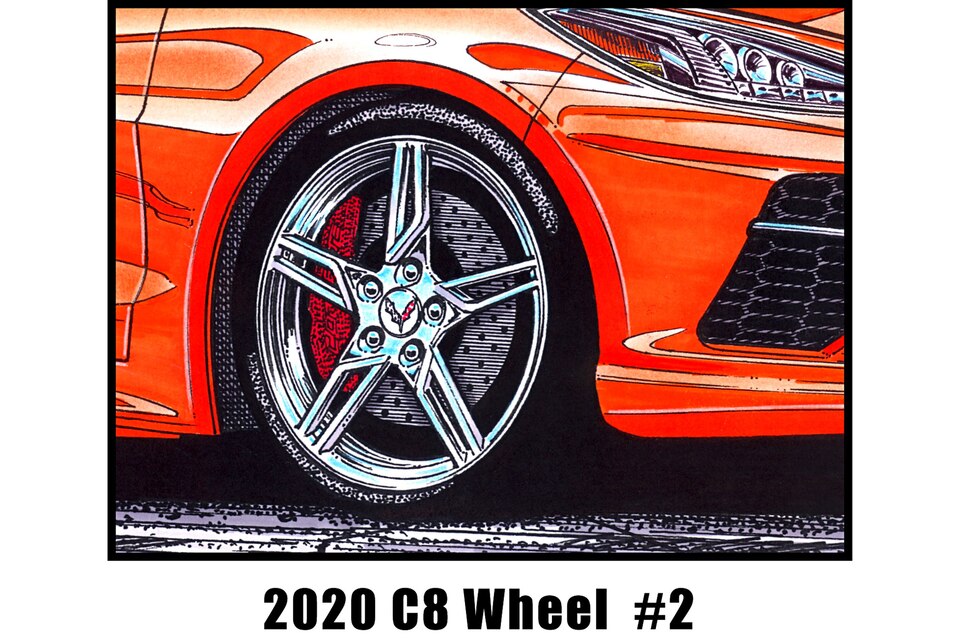
What future Corvette wheels will be made of is another area of speculation that is addressed in Teeter’s article.
“From a performance standpoint when it comes to wheels, there’s only one more rung on the high tech ladder: carbon fiber. Carbon Revolution, an Australian company claims a 60-pound weight savings on their Mustang GT350 project car. Carbon fiber is still very expensive. In 2017, it was reported that carbon-fiber wheel prices were coming down, but still cost around $12,000 for a set,” he states.
Maybe one day Corvette wheels may be made of carbon-fiber. Who knows, maybe the chassis will be carbon-fiber as well. Time will tell.
Source: superchevy.com/how-to/wheels-tires/1907-design-history-corvette-wheels-1997-2020
Shop Top Flight Automotive for 1997-2004 C5 Corvette Wheels / 2005-2013 C6 Corvette Wheels / 2014-2019 C7 Corvette Wheels / 2020 C8 Corvette Wheels











Leave a Response